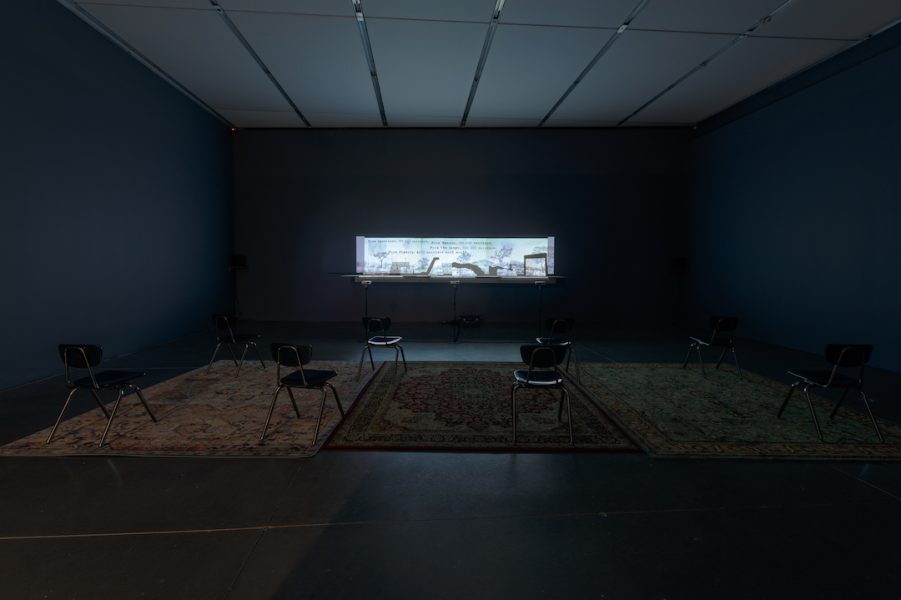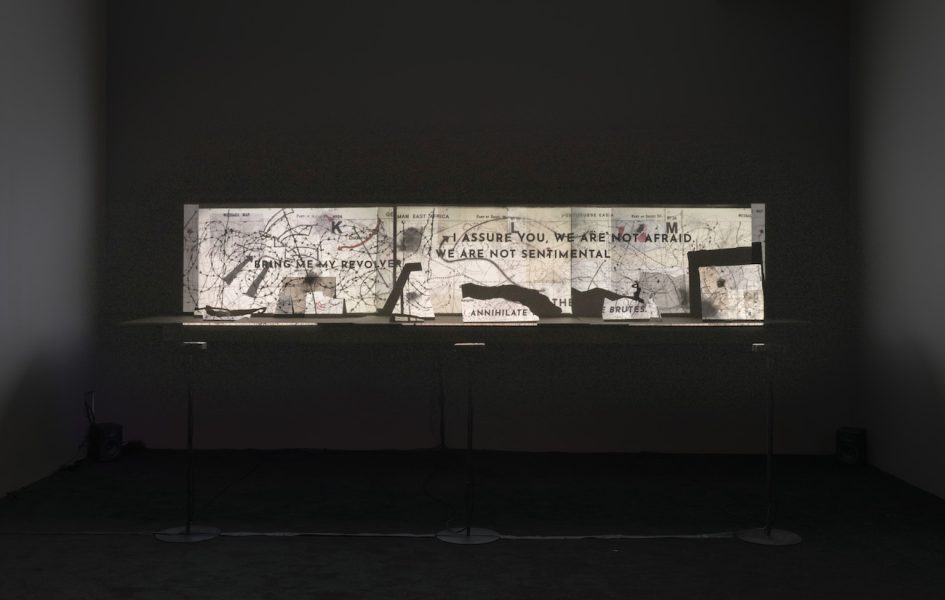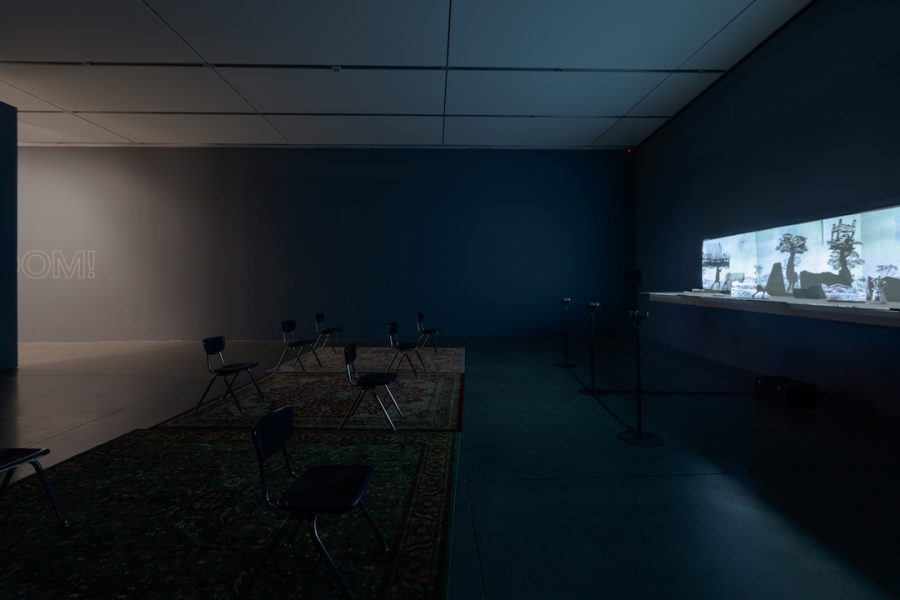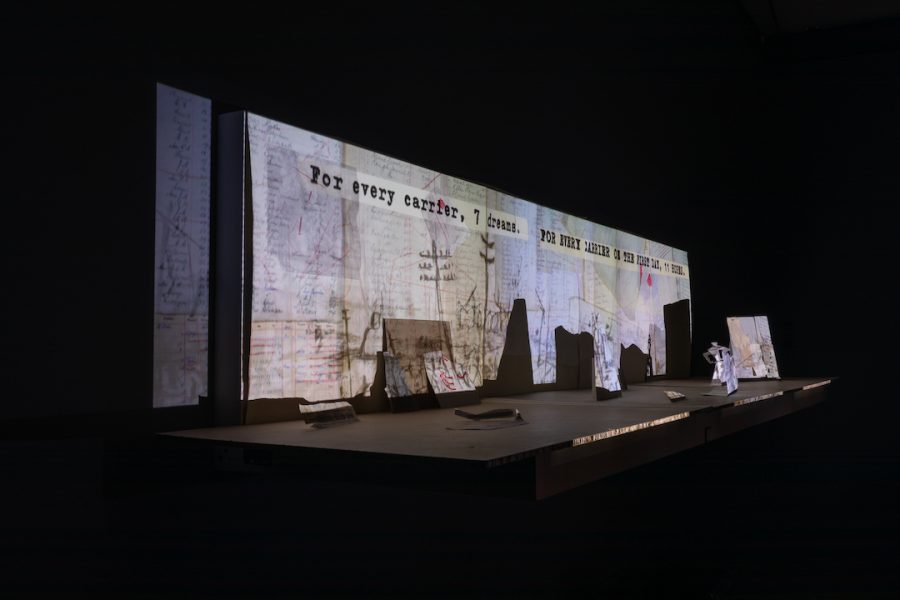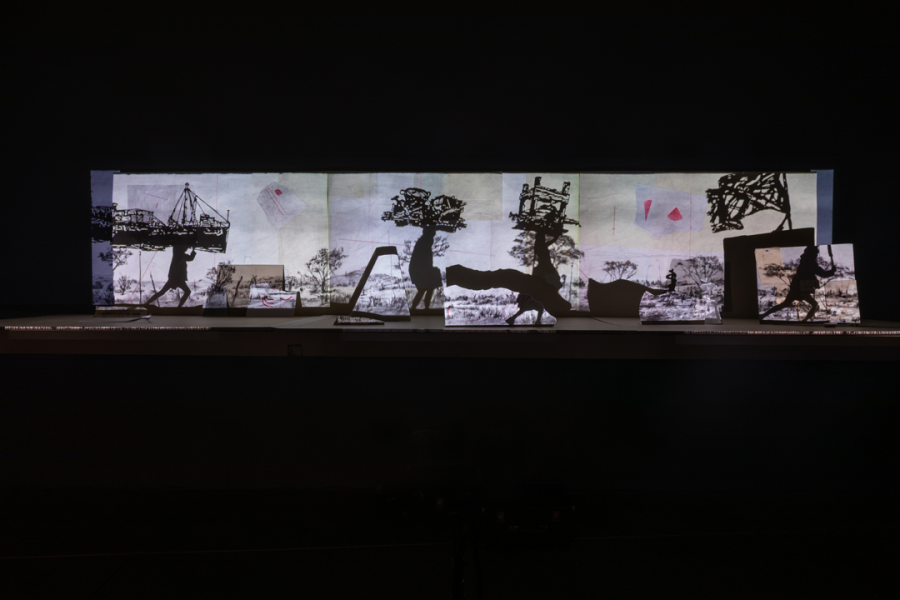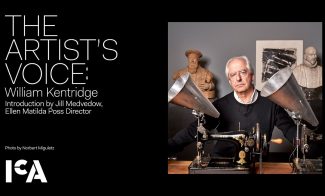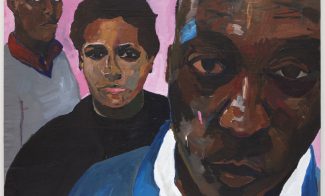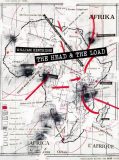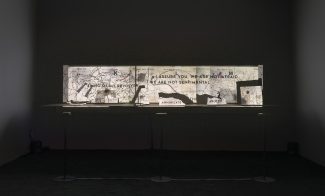The central focus of the wide-ranging, interdisciplinary work of William Kentridge (b. 1955, Johannesburg, South Africa) is the prolonged effects of colonialism in South Africa. Using a diverse range of media, from drawing, performance, and film to opera and other large-scale theatrical productions, Kentridge reanimates painful histories and uncomfortable paradoxes of colonialism—“what we’ve chosen not to remember,” as he says.
The ICA presents the U.S. museum premiere of KABOOM! (2018), a recent major acquisition and room-filling multimedia installation. KABOOM! tells the story of the nearly two million African porters used by British, French, and German colonial forces during World War I. Set to a rousing, orchestral score co-composed by Philip Miller and Thuthuka Sibisi, the monumental, three-channel video is projected onto a scale model of the stage from Kentridge’s tour-de-force performance The Head & the Load, which premiered at Tate London before being presented at New York’s Park Avenue Armory.
Employing his trademark multidisciplinary approach and his recurring trope of the procession, Kentridge builds up dynamic layers of drawings, moving images, and texts projected onto sculptural paper props and found objects to embody the dramatic arc and theatrical intensity of The Head & the Load at gallery scale. The title of The Head & the Load comes from a Ghanaian proverb — “The head and the load are the troubles of the neck” — and the porters in KABOOM! shoulder the physical load transported all across Africa. As the work suggests, they are the ones who ultimately bear the historical legacy of colonialism and war.
Note: Space is limited in this exhibition and visitors may need to wait to gain access to the work.
Educational materials
Intro wall text
“THE HEAD AND THE LOAD ARE THE TROUBLES OF THE NECK.”
— Ghanaian proverb
For over five decades, William Kentridge (b. 1955 in Johannesburg) has made wide-ranging works that examine the paradoxes of settler colonialism and apartheid in South Africa. His multidisciplinary practice weaves together drawing, print, animation, and more, to recompose our understandings of the past, emphasizing, as he says, “what we’ve chosen not to remember.”
A recent acquisition to the ICA’s permanent collection presented for the first time in a U.S. museum, KABOOM! (2018) is a seventeen-minute, three-channel video projected onto a scale model of the stage used in Kentridge’s theatrical production The Head & the Load (2018). The work addresses the history of African porters drafted into service for German, British, and French colonial powers during World War I. Kentridge tells this history through the medium of collage, “bringing different fragments together to find a provisional history,” as the artist explains. Its title comes from a Ghanaian proverb that reads, “the head and the load are the troubles of the neck,” which here recalls both the physical weight of goods, services, and weapons that porters—men, women, and children—carried for colonial soldiers, as well as their place in a global war that violently remade Africa’s borders.
Set to a rousing orchestral score, a multilayered co-composed by Philip Miller and Thuthuka Sibisi, KABOOM! features repurposed archival documents, animated drawings, and dramatic footage. Embodying the theatrical intensity of The Head & the Load at gallery scale, silhouettes of porters march across cut-up fragments of colonial maps alongside the writings of Reverend John Chilembwe, philosopher Frantz Fanon, and artist Tristan Tzara, among others. Some of these texts discuss the impact and complexity of colonialism and war, reflecting how World War I solidified the Scramble for Africa in further violently dividing the continent between European colonial empires. The narrative is punctuated by military drills, animal sounds, and selections made from African and European musical traditions. A way of speaking back to the incomplete story of colonialism through the techniques of collage and performance, KABOOM! envelops the gallery in a visual landscape that traverses memory and narrative, revealing our understanding of history to be a fragmented relationship to the past.
Suggested materials for further exploring themes in William Kentridge’s KABOOM!
Essays, articles, and books
William Kentridge, The Head & the Load. Massachusetts Museum of Contemporary Art and Prestel, 2020.
Tristan Tzara, “Dada Manifesto 1918”
Melvin E. Page, Africa and the First World War. Macmillan Press, 1987.
Geoffrey Hodges, The Carrier Corps: Military Labor in the East African Campaign, 1914–1918. Greenwood Press, 1986.
Frantz Fanon, trans. Richard Philcox, Black Skin, White Masks. Grove Press, 2008.
John Chilembwe, “The Voice of the African Native in the Present War.” Nyasaland Times, 1914.
W.E.B. Du Bois, “The African Roots of War.” The Atlantic, August 2014.
Kurt Schwitters, Ursonate
Pankaj Mishra, “How Colonial Violence Came Home: The Ugly Truth of the First World War.” The Guardian, November 10, 2017.
Videos
William Kentridge, “Peripheral Thinking”
Design Indaba, Johannesburg, June 3, 2015
Artist Talk: The Head & the Load: William Kentridge, Philip Miller, Thuthuka Sibisi, and Dr. Gus Casely-Hayford
Park Avenue Armory, December 6, 2018
An Evening with William Kentridge and Homi Bhabha
Museum of Fine Arts, Boston, December 11, 2019
Discussion Questions
1. Why do you think the African theater of World War I has been largely overlooked in popular histories of the war told in Europe and the U.S.?
2. What is the difference between history and memory? How can our personal or family memories interrupt, contradict, or add to larger histories?
3. Kentridge contends that collage is a useful metaphor for thinking about how different stories are pieced together. How is collage related to the telling of history?
